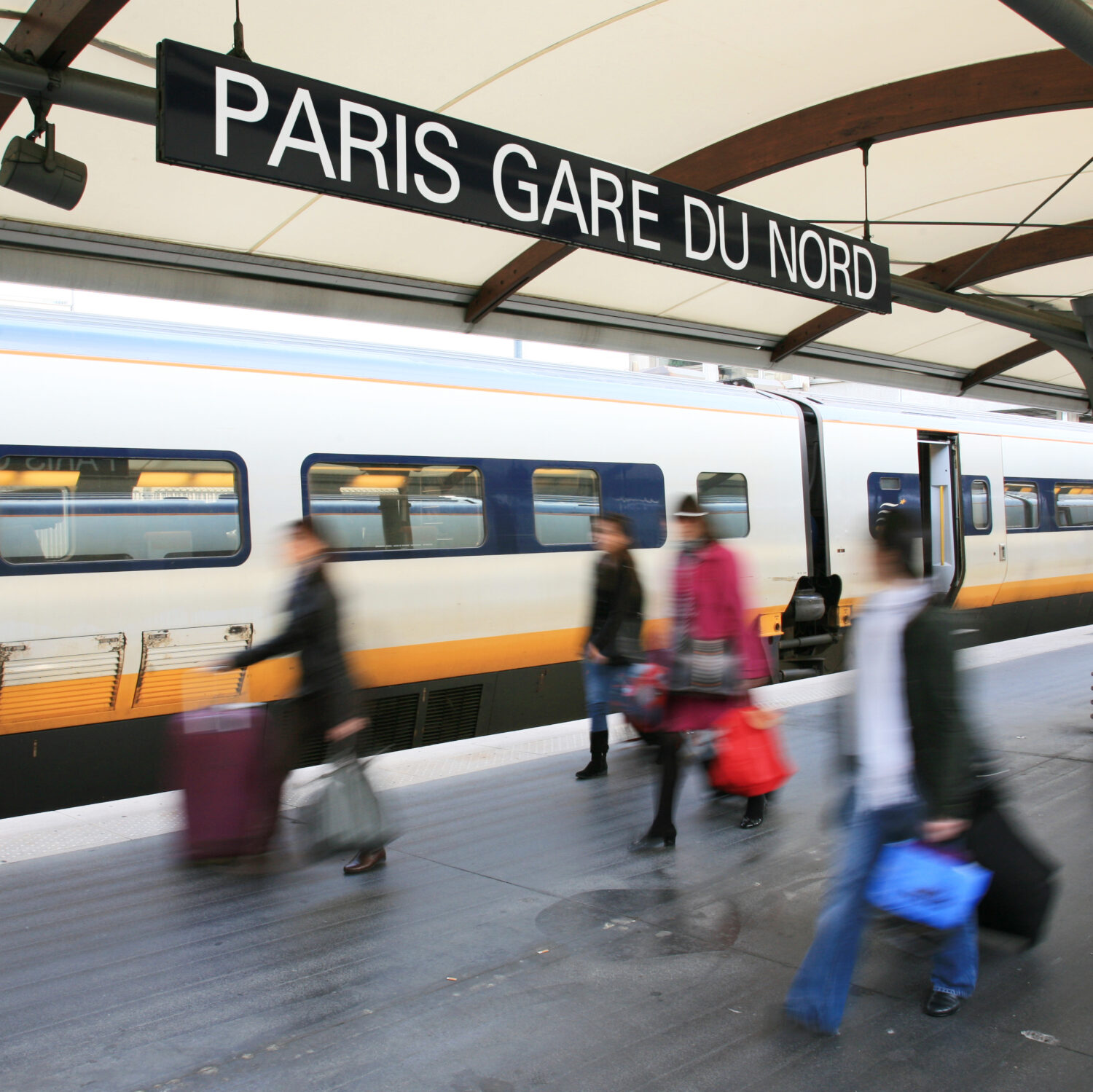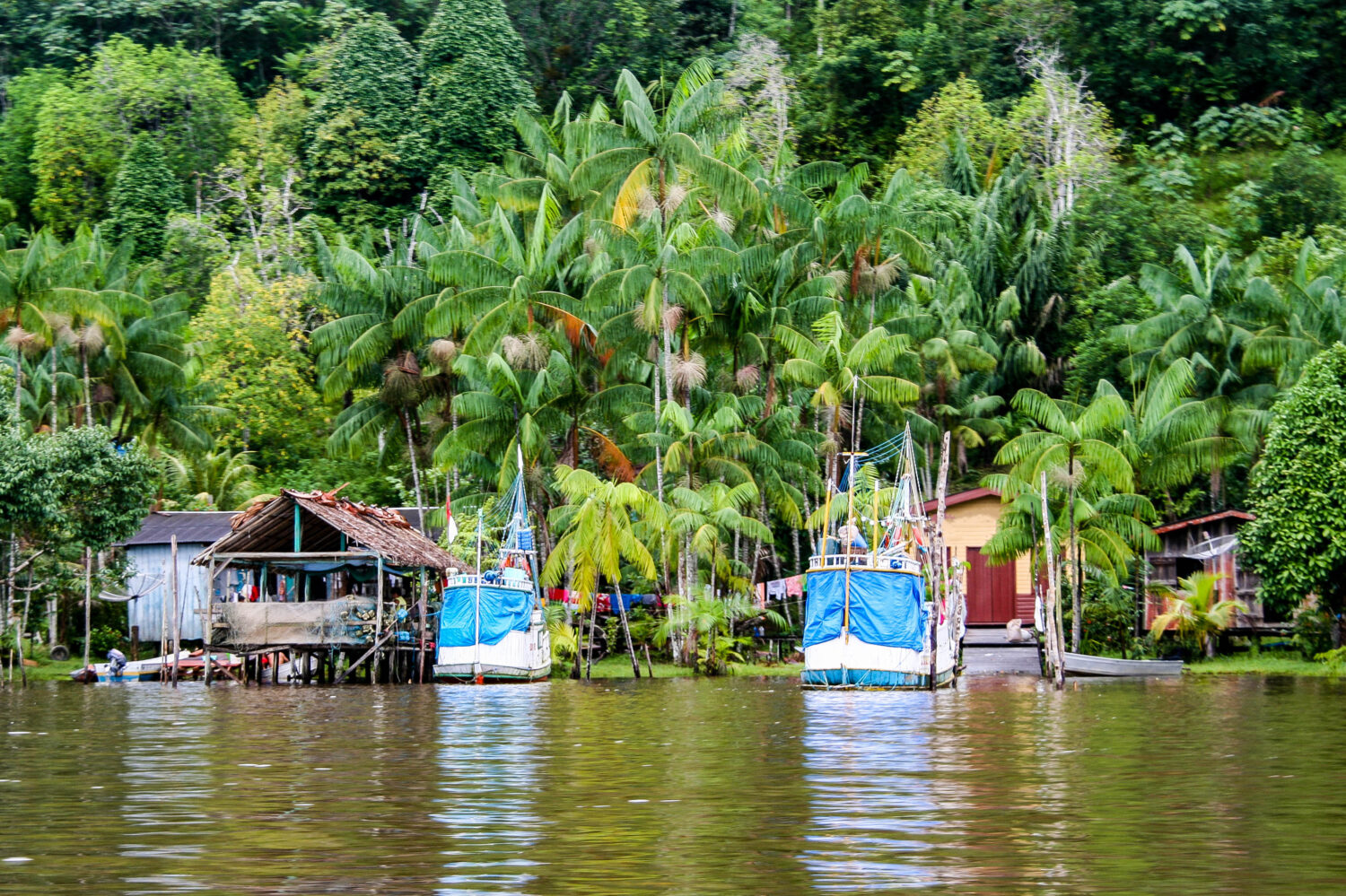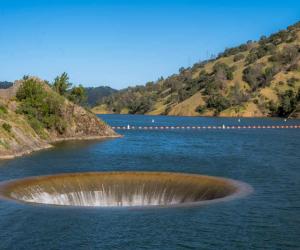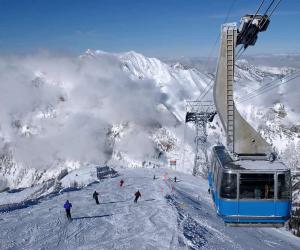Discover the Country That Uses 12 Different Time Zones (Most in the World!)
Imagine a sun that never sets over a nation. Its light reaching far beyond the mainland, illuminating distant lands across the globe. This poetic tropic is a reality for France. When night falls on the mainland, the day is just rising in its far-flung territories. One can’t be blamed for assuming that larger countries like Russia or the USA might have the most time zones. But France, the global capital of the 19th century—for good and bad, depending on which side of the colonial bayonet you found yourself on—holds . The tricolor flag flies across a total of 12 time zones. Heck, it even claims 13th one during Daylight Saving Time (DST) in Saint Pierre & Miquelon. Here, we transit across land and time that is France’s time zones.

©zheng yaqi/Shutterstock.com
A La Recherche Du Temps Standardisé: France’s Time Zones in Historical Context
The narrative of France’s time zones is deeply entrenched in its colonial past. The French Colonial Empire, established from the 16th century onward, was the world’s second-largest colonial empire. It encompassed territories in the Americas, , and Asia. The remnants of this vast empire are the overseas territories that contribute to France’s unique position on the global time zone map.
Before 1891, time in France was a local affair with each town and city operating on . However, the exigencies of modernization, particularly , necessitated a more standardized time-keeping system. Consequently, time was unified across Metropolitan France in 1891 to align with railway schedules. In doing so, the nation adopted Paris solar time as the standard.
Modern Times
The journey of time standardization further evolved in 1911. This was when Metropolitan France adopted GMT 0 as its official time, with GMT 1 used during summers from 1916 to 1940. The wheels of history turned again during World War II. Different parts of France adopted varying time zones, including GMT 2 in Nazi-occupied northern France. Post-war, in April 1945, France, aligning with its British ally, switched to GMT 1. This further shifted to GMT 1 for winter and GMT 2 for summer post-1976. And finally, the nation took steps to .
These historical evolutions in timekeeping reflect France’s enduring connection to its overseas territories. The current time zone arrangement, with Metropolitan France operating on Central European Time (UTC 01:00) and Central European Summer Time (UTC 02:00) from the last Sunday in March to the last Sunday in October, resonates with its past and present, knitting together a nation spread across continents, cultures, and, indeed, clocks.

©Sampajano_Anizza/Shutterstock.com
A Journey Through The French Territories
The diverse time zones across France’s overseas territories offer a unique exploration of its breadth beyond the mainland. Each territory, with its distinct time, culture, and geography, tells a part of France’s extensive colonial story.
European France
The core of the French nation, European France, operates on Central European Time (UTC 01:00). This transitions to Central European Summer Time (UTC 02:00) during daylight saving. This serves as a focal point from where we branch out to the diverse time frames of its overseas territories.
Caribbean and Atlantic Territories of France
Our journey begins in the west with the Caribbean and Atlantic territories like Guadeloupe, Martinique, and Saint Pierre & Miquelon. These islands, operating on Atlantic Standard Time (UTC-04:00), offer a rich blend of French and Creole cultures.
South America
Further south, , a land of space exploration and rich biodiversity, operates on French Guiana Time (UTC-03:00). The Guiana Space Centre here serves as a portal to the cosmos. It’s juxtaposed against the lush Amazonian rainforests that house a myriad of Earth’s flora and fauna.
France’s Indian Ocean Territories
Crossing the Atlantic, we reach the idyllic islands of Réunion and Mayotte. Operating on Réunion Time (UTC 04:00), these islands are a hub of marine biodiversity. The vibrant here are a diver’s paradise, showcasing a harmonious blend of life beneath the waves.
Pacific Territories
Our voyage takes us further east to the Pacific territories of , French Polynesia, and Wallis & Futuna. These each claim its distinct time zones. They range from Tahiti Time (UTC-10) to Wallis & Futuna Time (UTC 12). These islands, with their unique Polynesian culture and breathtaking underwater realms, represent France’s farthest reach across the globe.
Other Areas
Lastly, the , though lesser known, play a crucial role in scientific research and environmental monitoring. The time zones here align with the needs of research and international collaboration.

©evenfh/Shutterstock.com
Exploring Time Zones Up Close
Time zones act as the world’s temporal markers, aligning our clocks with the Earth’s rotation. This concept, while simple at its core, has evolved over time due to technological advancements and the need for standardized time. Let’s dive into the mechanics and history of time zones, shedding light on their integral role in our global setup.
The Basic Idea
The basic idea was to divide the globe into 24 equal time zones. Each would represent one hour of Earth’s 24-hour rotation, with each zone spanning 15 degrees of longitude. The (0° longitude) at Greenwich, England was chosen as the starting point. However, the real-world application resulted in 38 time zones. This was influenced by a mix of geographic, political, and societal factors, deviating from the initial simplistic model.
Standard Time Emergence
The industrial era’s rise, marked by expanding railways and telecommunication, demanded a more structured timekeeping system for coordinated economic and social activities. For instance, the US adopted four time zones to simplify rail travel. Similarly, the global community moved towards a standardized time framework, recognizing the Greenwich Meridian as the reference point for Greenwich Mean Time (GMT). However, the transition wasn’t straightforward. Countries like China and India adopted a single time zone despite their vast longitudinal spread. Additionally, doing so helped with political unity and administrative efficiency.
Transition to Coordinated Universal Time (UTC)
The shift from GMT to Coordinated Universal Time (UTC) in 1967, endorsed by the United Nations, marked a significant step towards precise timekeeping. This change was propelled by the invention of atomic clocks and the acknowledgment of Earth’s variable rotation. The term “UTC” was a linguistic blend of English and French. But interestingly enough, neither “Le temps universel coordonné” nor “Coordinated Universal Time” acronyms to UTC. However, it continues to anchor our global time structure, ensuring synchronized activities worldwide with its atomic precision.
Oddities and Challenges
The execution of time zones reveals a range of oddities and challenges. For instance, Chatham Islands follow the unique UTC 13:45 time zone during daylight saving time, and China’s entire vast territory operates under a single time zone. These quirks reflect the rich blend of cultural, historical, and political factors shaping time zones. Moreover, the quest to structure time extends beyond Earth. Space agencies are attempting to establish time systems on the moon and the International Space Station.

©GaudiLab/Shutterstock.com
The Modern Scene: Today’s Time Zones
Today, the evolving canvas of time zones mirrors the dynamic interactions of geopolitical, technological, and societal trends. With the digital era marked by the advent of the internet and global connectivity, time zones have gained new significance. This is so particularly in the realms of remote work and international partnerships. Here, we delve into the contemporary relevance of time zones and their intersection with our digital existence, economic pursuits, and global engagements. Some popular ones are and .
Global Business and Interaction
In today’s globalized business landscape, time zones are pivotal for scheduling meetings, orchestrating projects, and enabling smooth communication across borders. The challenge of navigating time differences has spurred the development of tools and software designed to streamline cross-time-zone endeavors for individuals and organizations alike.
The Remote Work Horizon
The rise of remote work has underscored the importance of grasping and managing time zones. Team members spread across the globe need to align their working hours, ensuring productivity and harmony despite geographical and temporal divides.
Towards Uniformity
Some regions have toyed with the idea of merging time zones to promote economic cohesion and simplify time management. However, such proposals often face pushback due to historical, cultural, or political considerations. The tug-of-war between uniformity and local preferences continues to influence the dialogue surrounding time zone arrangements.
Time Zone Curiosities
Time zones, often overlooked, are pivotal for global synchronization. These unseen boundaries on our globe not only structure our daily routines but also encapsulate historical, political, and geographical narratives. Here are some captivating facets of time zones across the world:
Non-standard Time Zones
Countries like China, India, and Argentina break from the norm of straight-line time zones due to their extensive territories, . This uniform time standard eases governance yet can yield peculiar local time anomalies.
Sunset Timing Anomalies
The interplay between geographical location and time zones leads to interesting variations in sunset times. For instance, despite being an hour ahead, Paris may witness sunset earlier than London due to its geographical position.
World War II Time Legacy
The still resonate in Europe’s time zone layout. Germany’s occupation prompted time adjustments in countries like France, Holland, Luxembourg, and Belgium. Additionally, Spanish dictator Franco’s alliance with Nazi Germany triggered a time zone shift in Spain, a legacy still evident today.
Leap Seconds Adjustment
are introduced to align Coordinated Universal Time (UTC) with astronomical time, ensuring our timekeeping remains accurate alongside Earth’s rotation, albeit minute, these adjustments are crucial.
Pacific Time Enigma
Pacific islands like Samoa, Tokelau, Tonga, and the Line Islands, present a unique time zone scenario. Their proximity to the date line offers whimsical time travel experiences, !
Märket Island’s Time Divide
The diminutive island of Märket, shared between Sweden and Finland, encapsulates time zone quirks. Despite its small size, a one-hour time difference spans its length, embodying the peculiarities inherent in the global time zone system.
Daylight Saving Time: A Mixed Blessing
is a practice that has its share of admirers and detractors. Here, we delve into the intricacies of DST, exploring its benefits, drawbacks, and the scientific foundation underpinning it:
The Birth of DST
Initially conceived to optimize daylight usage, lessen artificial lighting reliance, and conserve energy, DST involves advancing the clocks during summer, facilitating more daylight during waking hours.
The Pros and Cons
DST’s upside includes less energy use and extra daylight for outdoor pursuits. Conversely, the sudden time shift can disrupt sleep, potentially impairing cognition temporarily and heightening accident risks.
Circadian Rhythm Mismatch
DST can cause a misalignment between our internal body clock and social schedules, leading to Social Jetlag (SJL), linked with various health concerns.
The DST Science
DST’s science centers around human circadian biology, with light being a primary zeitgeber (time-giver) for our internal clock. Although DST aims to align social activities with natural daylight cycles, the abrupt shift can cause temporary misalignment.
The Unresolved Discussion
The discourse on DST continues, with some regions contemplating its abolition, while others ponder year-round DST. The complex decision-making around DST necessitates a nuanced understanding of its effects on energy, health, and societal well-being.

©Raland/Shutterstock.com
Cell Phones and Timekeeping
In our hands, cell phones embody complex systems harmoniously navigating time and space. Beneath their sleek exteriors, myriad mechanisms work tirelessly to keep us tethered to the time continuum.
Central to cell phone timekeeping is the cell network servicing these devices. Through communication channels, cell networks relay time information, anchoring cell phones to the temporal grid. For higher precision, these gadgets connect to the Global Positioning System (GPS), a satellite constellation equipped with atomic clocks, delivering precise time emission signals to GPS receivers within cell phones. This celestial communication minimizes error to a scant few milliseconds, bestowing near-perfect time-telling on our devices.
Within the smartphone’s silicon core, an electronic resonator, often a quartz crystal, oscillates, marking the rhythm of seconds. This humble resonator is crucial for ensuring accurate timekeeping on cell phones.
Wireless Chronometry
Several technological elements contribute to cell phone time accuracy. These include the phone type, network communication, GPS signal strength, and time zone settings. All of this translates universal time code into local time, reflecting the phone’s geographical location.
Despite this tech orchestration, a caveat exists. For instance, , setting time based on GPS signals, sprint 15 seconds ahead due to the 15 “leap seconds” added since 1982 to the UTC time scale. Although GPS signals carry the offset correction, Android handsets overlook it, marking a minor yet intriguing lapse in time sync.
Beyond personal gadgets, GPS also synchronizes cell networks. Atop each cell tower, a GPS Clock tunes cell towers to a harmony of 100 nanoseconds, crucial for seamless mobile network handover, ensuring unhindered communication flow.
In essence, cell phone time-telling is a narrative interwoven with complex technologies, each contributing to the temporal tapestry displayed on our screens. While sufficient for daily use, those seeking extreme precision might turn to dedicated atomic clocks. This dance with time underscores our ceaseless endeavor to tether ourselves to time’s ever-ticking continuum as we progress in the digital age.
Going Against the Zone
In a world where the sun never sets on global interactions, the maze of time zones has emerged as a ticking puzzle. Born from the womb of the 19th century, time zones were the offspring of the railroad industry’s desire for standardization. Yet, as the globe spun into the digital age, the segmented slices of time began to chafe against the seamless flow of global conversations.
The birthplace of time zones, initially a beacon of synchronicity, has become a maze in our globally connected era. Each zone, influenced by politics and economy, sometimes deviates from the sun’s natural progression. The argument against time zones paints a picture of a world constrained by local clocks, turning scheduling into a global game of time-jumping.
A Time Zone For All
The idea of , echoing Greenwich Mean Time (GMT), promises simplicity. A universal time, unfazed by borders, envisions a world where communication flows without the hassle of juggling time zones. It’s less about making the world march to a single rhythm and more about creating a shared time language that unifies our global exchanges.
Moving from our current time divisions to a unified time faces challenges, from ingrained traditions to practical obstacles. Life’s rhythm, linked with the sun’s rise and set, holds local significance for communities. A single global time doesn’t intend to silence this local rhythm. Instead, it hopes to offer a unifying thread for the world’s diverse fabric.
Born from a wish to conserve candle wax, today’s time changes can leave many feeling a hint of jet lag. The ritual of clocks springing forward and falling back can sometimes clash with life’s natural pace.
The narrative against time zones and daylight savings time unfurls a vision of a world unshackled by arbitrary temporal boundaries. A world where the flow of conversation and collaboration does not stutter at the gates of time zones. The idea of a universal time, such as Coordinated Universal Time (UTC), aims to streamline our time story, forging a shared language for our interconnected world.
Conclusion
The concept of time zones, though seemingly straightforward, is fraught with historical, political, and geographical nuances. France’s vast reach, from its mainland to distant territories, showcases the diverse facets of time. While mainland France follows Central European Time (CET), the Marquesas in French Polynesia have their own half-hour offset, Marquesas Time (MART). This range of time zones highlights the nation’s incredible diversity and global presence.
In France, its many time zones are a reflection its colonial history, overseas territories, and global influence. Each zone tells a tale that blends nature and the human effort to align life with the sun’s path across the heavens.
Moreover, the discourse around time zones extends beyond mere timekeeping. It traverses into the realms of economic coordination, global commerce, and the seamless flow of modern digital communication. The emergence of digital workspaces and global teams underscores the pivotal role of time zones in navigating the complexities of modern-day collaborations.
Time For a Change?
Furthermore, the narrative of time zones in France elucidates the broader global narrative of timekeeping. It echoes the universal endeavor to harmonize the inexorable march of time with the rhythm of human activities. France’s diverse time zones highlight the tension between a push for time uniformity and the importance of local time traditions. Each zone serves as a testament to the fine line between worldwide sync and preserving local character.
Summary Table of France’s Time Zones
A table detailing the time zones in France, encompassing both mainland France and its overseas territories, along with the respective geographic locales, follows:
| Time Zone | Offset | Geographic Locale | Interesting Facts/Aspects |
|---|---|---|---|
| Central European Time (CET) | UTC 1 | Mainland France | Standard time for mainland France; one hour ahead of Coordinated Universal Time (UTC) |
| Central European Summer Time (CEST) | UTC 2 | Mainland France | Observed during Daylight Saving Time; clocks are set forward by 1 hour from the last Sunday in March to the last Sunday in October |
| Tahiti Time (TAHT) | UTC-10 | French Polynesia | The word “tattoo” originates from Tahiti, where tattoos are considered signs of beauty. |
| Marquesas Time (MART) | UTC-9:30 | French Polynesia | Unique half-hour offset |
| Gambier Time (GAMT) | UTC-9 | French Polynesia | N/A |
| Easter Island Standard Time (EAST) | UTC-8 | Clipperton Island | N/A |
| Atlantic Standard Time (AST) | UTC-4 | Guadeloupe, Martinique, Saint Barthélemy, Saint Martin | AST is four hours behind Coordinated Universal Time (UTC-4). This time zone is in use from the first Sunday in November to the second Sunday in March, when Daylight Saving Time is not in effect. |
| French Guiana Time (GFT) | UTC-3 | French Guiana | GFT is three hours behind Coordinated Universal Time (UTC-3). Does not observe daylight saving time. |
| Pierre & Miquelon Daylight Time (PMDT) | UTC-2 | Saint Pierre and Miquelon | Observes during Daylight Saving Time |
| Eastern Africa Time (EAT) | UTC 3 | Mayotte | Also uses daylight saving time, switching to UTC 3 during the summer. |
| Réunion Time (RET) | UTC 4 | Réunion | Réunion holds the world records for the most rainfall in 12-, 24-, 72-, and 96-hour periods. |
| French Southern and Antarctic Time (TFT) | UTC 5 | French Southern Territories | N/A |
| New Caledonia Time (NCT) | UTC 11 | New Caledonia | N/A |
| Wallis and Futuna Time (WFT) | UTC 12 | Wallis and Futuna | N/A |
Summing Up the Summary Table
In mainland France, Central European Time (CET) is the standard time, while Central European Summer Time (CEST) is observed during Daylight Saving Time (DST). The overseas territories have various time zones due to their geographic locations scattered across the globe. Interesting to note is the unique half-hour offset in the Marquesas Time (MART), and the observation of Daylight Saving Time in Saint Pierre and Miquelon with Pierre & Miquelon Daylight Time (PMDT).









